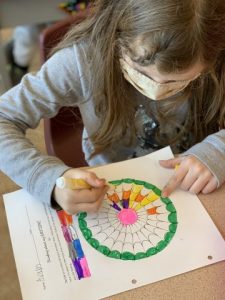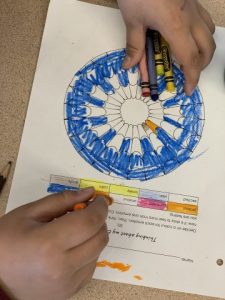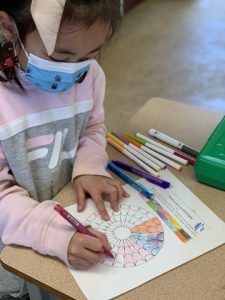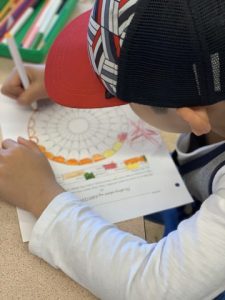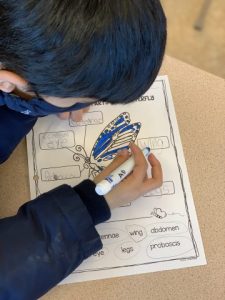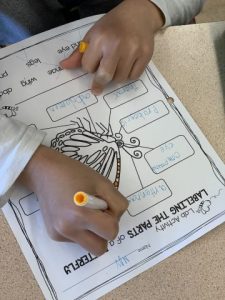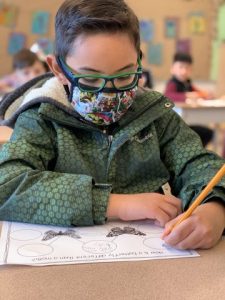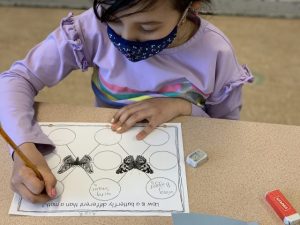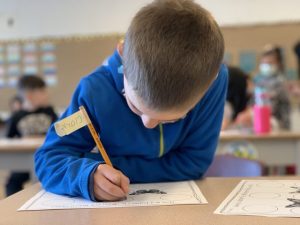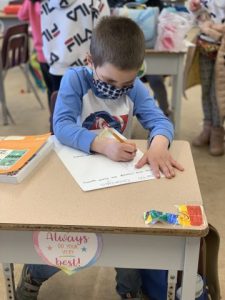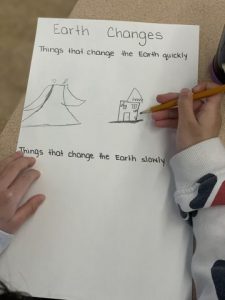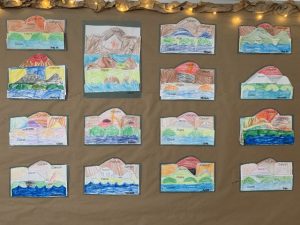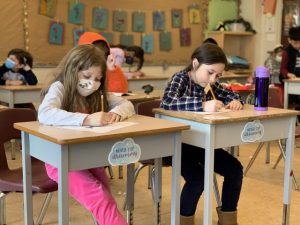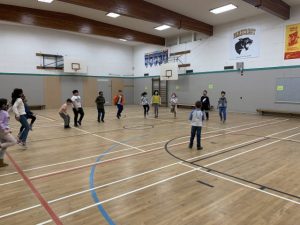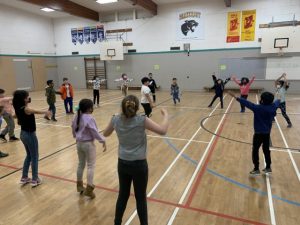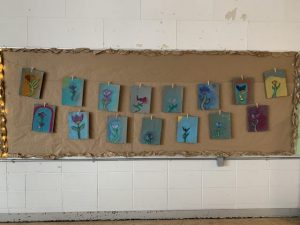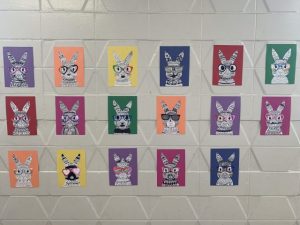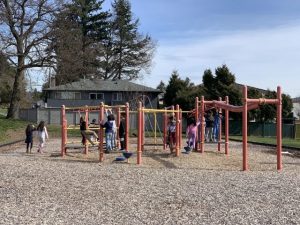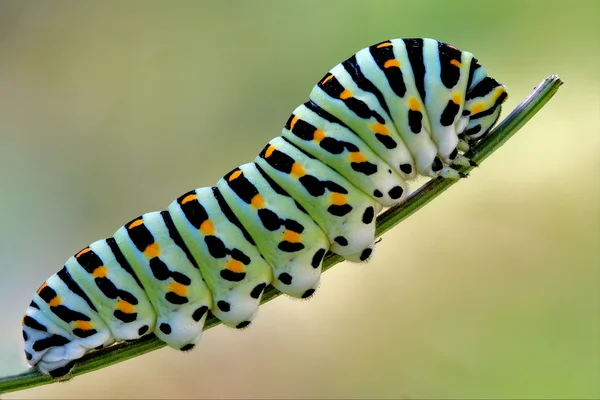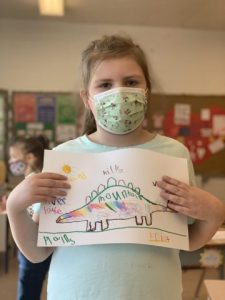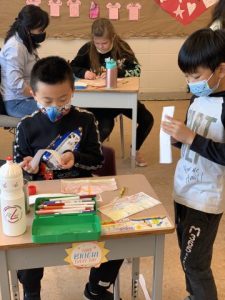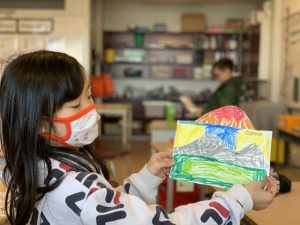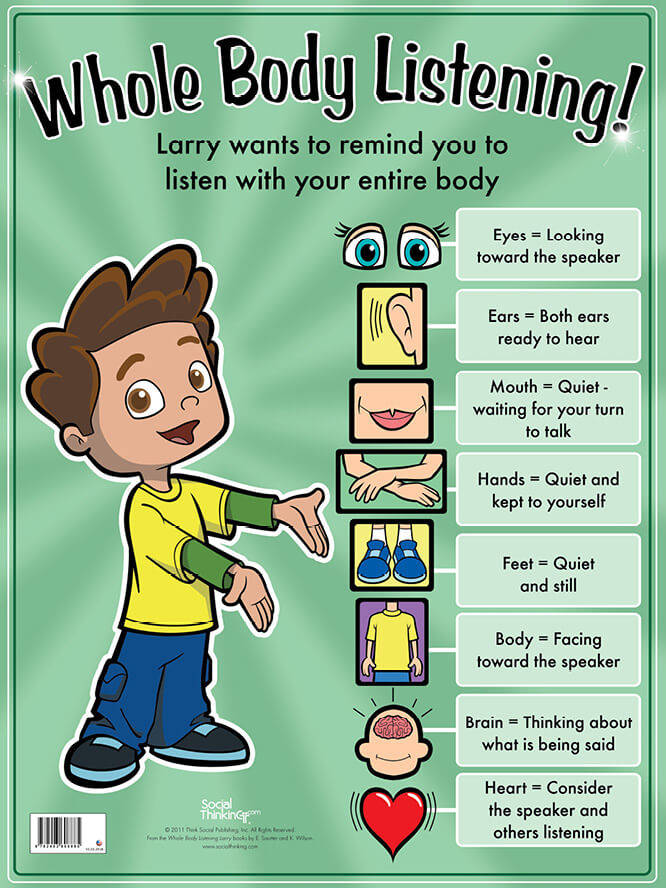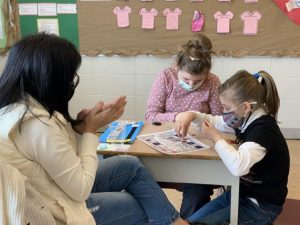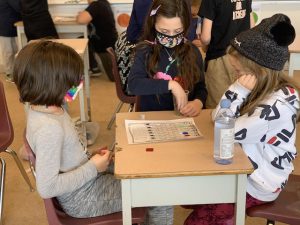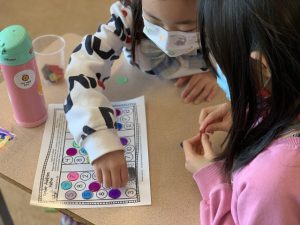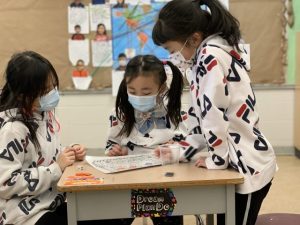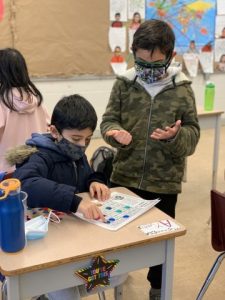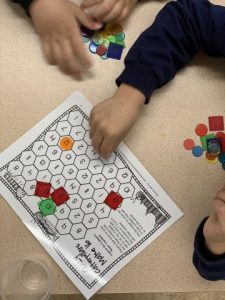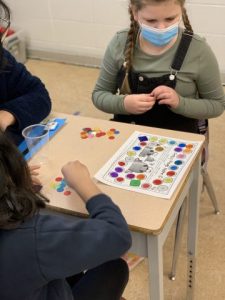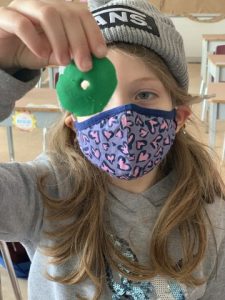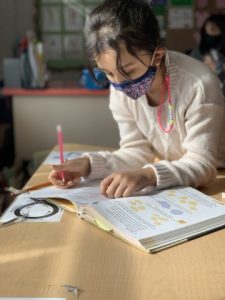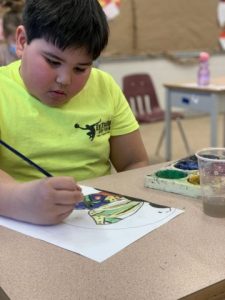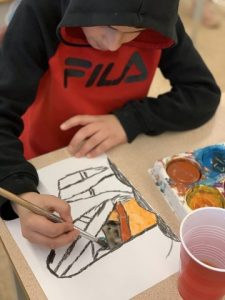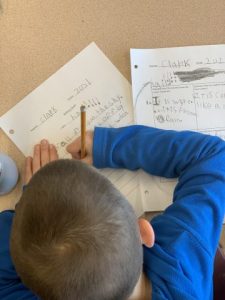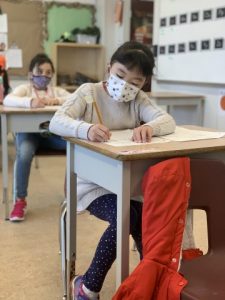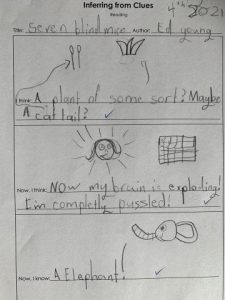In Math, the Grade 2s continue to learn about data collection and analyzing their results. We started Monday off with some very challenging word problems. Can you and your family try and solve this word question below? If you can, please show your thinking on a separate piece of paper and hand it into Mrs. Ralph!
Charlie saw 19 butterflies on the long weekend. On Friday he saw 8 butterflies, he saw 3 more butterflies on Sunday than on Saturday. How many butterflies did Charlie see on Saturday and Sunday? **hint** remember to look at the total of butterflies that Charlie saw altogether, draw out your thinking in a graph. Good luck!
While the Grade 2s have been up to their elbows swimming in data word problems, the Grade 3s have begun a new unit in their textbooks, FRACTIONS! I love to connect fractions with food. When we share, we can make equal parts. When we split an orange, it can be divided into 2 equal parts, making a half or 1/2. When we cut a pie or a pizza to share between friends, we can cut it into 6 equal slices. If you can, please show your thinking on separate pieces of paper and hand it into Mrs. Ralph to solve the questions below.
Can you cut out a circle and cut it into two equal parts? Now, can you cut out a rectangle and cut that into 3 equal parts? Finally, can you cut out a square and cut that into 4 equal parts? If you can, please bring it in to show Mrs. Ralph! Good luck!
In preparation for Earth Day, which is on Thursday, April 21, 2021 we began to make ‘stained glass globes.’ Today was just our first day preparing them and they already look beautiful. How do you think we made them? It involves a coffee filter, markers and spray bottle! Stay tuned to see the finished product. As a family, can you discuss the importance of taking care of our environment? What are ways that YOU can reduce the size of your carbon footprint? How can YOU make even a small difference in protecting Mother Earth?
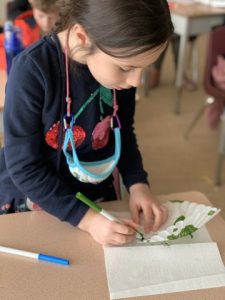
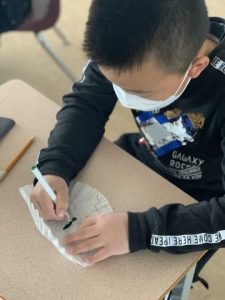

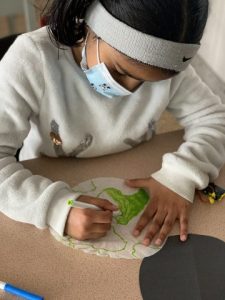
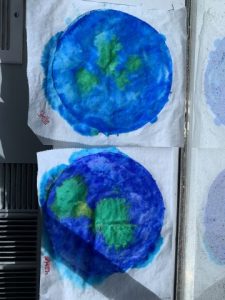
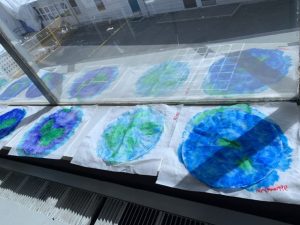
In writing we are beginning to explore a new genre of writing, Instructional Writing. What is the purpose of instructional writing? How are instructions used in our every day life? Some ideas that come to my mind include recipes, instructions to build lego or a robot, IKEA furniture assembly instructions etc. Can you think of other ideas that require instructions?
As a challenge, can you please give Mrs.Ralph explicit and clear instructions on how to grow a plant. Here are some instructional key words that you are encouraged to use in your writing: First, Secondly, Next, Then, Finally. By incorporating these transitional words will signal to your reader that they must move onto their next step. Remember to include in the steps the materials or equipment that you will need.
